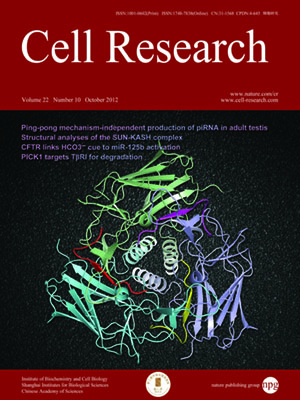
Volume 22, No 10, Oct 2012
ISSN: 1001-0602
EISSN: 1748-7838 2018
impact factor 17.848*
(Clarivate Analytics, 2019)
Volume 22 Issue 10, October 2012: 1413-1415
RESEARCH HIGHLIGHTS
The activatory long non-coding RNA DBE-T reveals the epigenetic etiology of facioscapulohumeral muscular dystrophy
Miguel Vizoso1 and Manel Esteller1,2,3
1Cancer Epigenetics and Biology Program (PEBC), Bellvitge Biomedical Research Institute (IDIBELL), 08907 L'Hospitalet, Barcelona, Catalonia, Spain
2Department of Physiological Sciences II, School of Medicine, University of Barcelona, Barcelona, Catalonia, Spain
3Institucio Catalana de Recerca i Estudis Avan鏰ts (ICREA), Barcelona, Catalonia, Spain
Correspondence: Manel Esteller,(mesteller@idibell.cat)
Facioscapulohumeral muscular dystrophy (FSHD) is a neuromuscular disorder often considered to be the third most common muscular dystrophy. Deletions reducing the copy number of the D4Z4 repeat in the distal end of the 4q arm are the main genetic cause of the disease. The recently highlighted research has identified a transcriptional activatory long non-coding RNA involved in the disease that acts through the recruitment of ASH1L, a protein belonging to the Trithorax family.
Cell Research (2012) 22:1413-1415. doi:10.1038/cr.2012.93; published online 19 June 2012
FULL TEXT | PDF
Browse 2325


